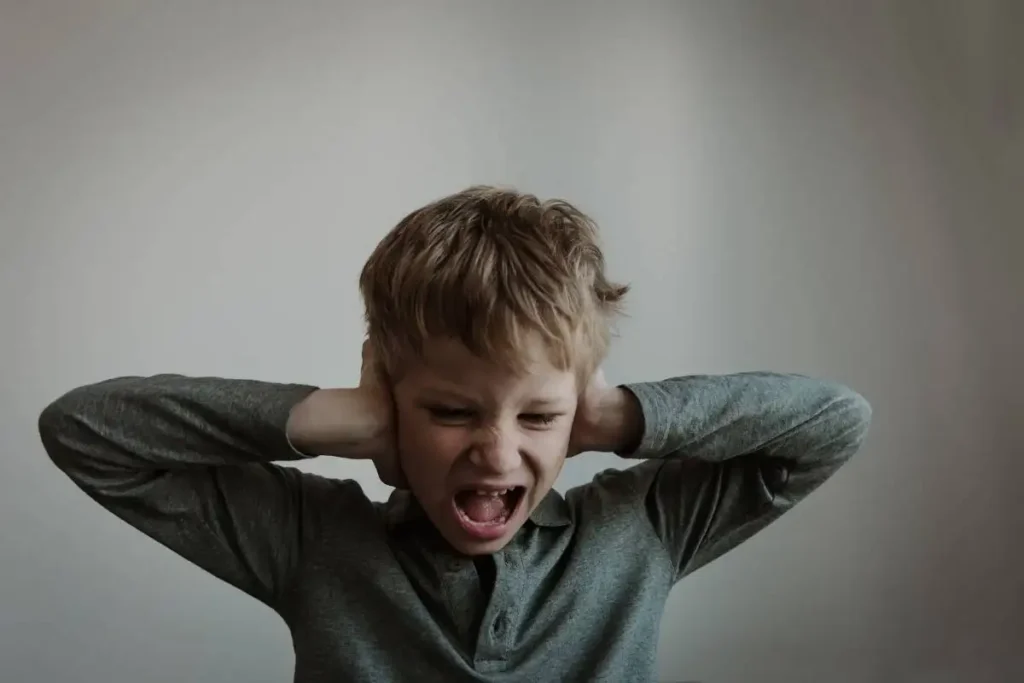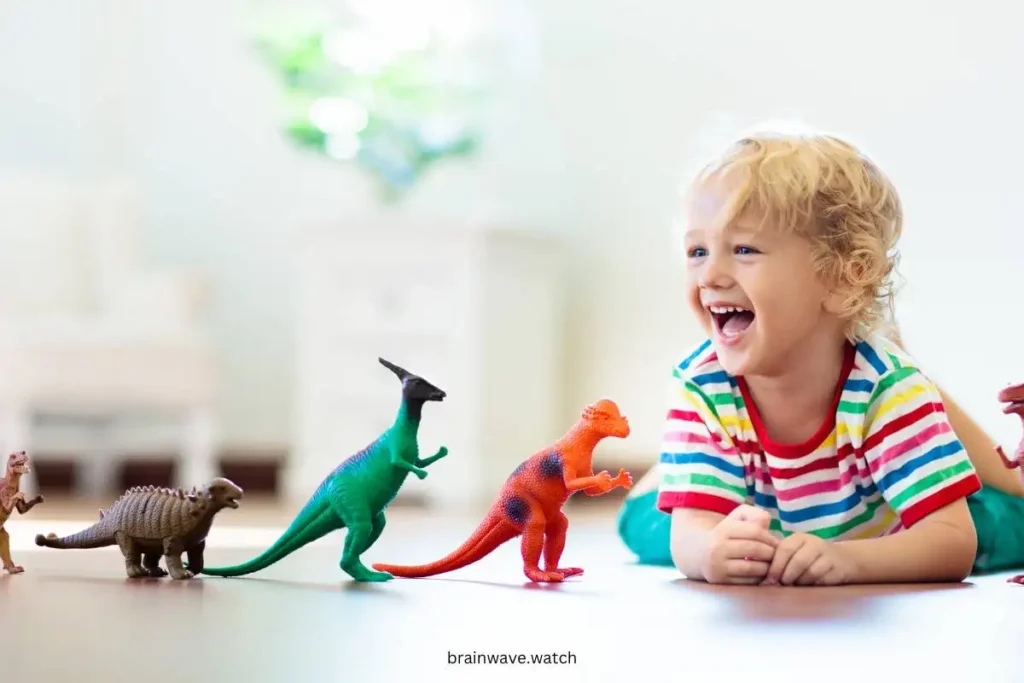Sensory overload refers to a condition where one’s senses are overstimulated, often resulting in distress or challenges in processing the input. It occurs when the brain receives too much sensory information at once, making it difficult to filter signals from noise or prioritize which sensory inputs to attend to.
Sensory overload happens when one or more of the five senses – sight, sound, smell, taste, and touch – are overloaded by excessive stimulation. This overstimulation overwhelms the brain’s ability to balance and process the information appropriately. As a result, sensory signals get jumbled and create confusion.
Individuals experience sensory overload differently depending on their sensory sensitivities and thresholds. What may be a typical sensory experience for some can be overwhelming and stressful for others. The key characteristic of sensory overload is that the volume or intensity of sensory stimuli exceeds one’s ability to manage and integrate that information. This leads to feelings of anxiety, distraction, irritation, confusion, or panic.
Sensory overload can happen occasionally in response to situational factors, or it may be an ongoing challenge for individuals with sensory processing disorders or conditions like autism, ADHD, or PTSD. The treatment focuses on reducing input, managing responses, and building sensory tolerance over time.
Causes of Sensory Overload
Sensory overload occurs when children receive too much sensory input all at once. Their brains have trouble processing and filtering all the stimuli, leading to overload. Some common causes and sources of sensory overload in children include:
- Crowded or noisy environments – Places with lots of people, sounds, and activities can overload kids’ auditory and visual senses. Examples are busy supermarkets, playgrounds, school cafeterias, sporting events, concerts, and parties. The crowds, constant noise, and visual stimulation are too much to take in.
- Bright or flashing lights – Visual inputs like bright sunlight, strobe lights, or screens can overstimulate the visual system. Fluorescent lights in stores and schools can also cause issues for visually sensitive children.
- Excessive touch stimuli – Tactile sensitivities may make clothing tags, certain fabric textures, tight clothes, sticky hands, or wet clothes unbearable. Hugs and physical contact from others may be problematic too.
- Strong odors – Smells like perfume, cleaning products, or food can trigger kids’ smell sensitivities. Any strong or unpleasant odor may feel overwhelming.
- Other sensory stimuli – Tastes, smells, and physical sensations during activities like eating, bathing, or grooming can also contribute to feeling overloaded.
The sheer amount and intensity of sensory input that bombards children throughout the day lead to overload as they struggle to filter and process it all. Paying attention to situations and stimuli that tend to trigger kids can help minimize overloading their senses.
Signs and symptoms
Sensory overload can cause a variety of observable signs and symptoms in children. Some of the most common include:
- Covering ears – Children may cover or hold their ears to try to block out overwhelming sounds. Ear pain or noise sensitivity is common.
- Avoiding eye contact – Bright lights, colors, and visual movement can be overstimulating. Children may avoid looking directly at things or people.
- Crying or screaming – Loud vocal outbursts are a way children may express feeling overwhelmed by sensory input. High-pitched screams are a sign of distress.
- Panic – Rapid breathing, sweating, racing heart rate, and adrenaline surges may occur. Children may express feeling scared, anxious, or unsafe.
- Withdrawal – Tuning out or pulling away from external stimuli by becoming very still and quiet. Hiding under furniture or covers. Lack of response.
- Shutting down – Freezing up and being unable to move, speak, or respond. Going nonverbal. Muscle rigidity.
Paying attention to these behavioral responses can help parents and caregivers recognize when children are becoming overloaded and need support. Reactions will vary based on the child’s sensitivity levels and coping capacity at the moment. Withdrawing and shutting down tend to signal extreme overstimulation.
Diagnosis of Sensory Overload
Diagnosing sensory overload in children is based primarily on reported symptoms rather than lab tests or other definitive medical assessments. There are no blood tests, imaging scans, or other objective ways to diagnose sensory overload. Instead, doctors and psychologists rely on checklists, surveys, and questionnaires completed by parents, teachers, and other caregivers who observe the child’s behavior and responses regularly.
Some of the common diagnostic tools used include:
- Sensory Profile: This standardized questionnaire asks parents and teachers about the child’s responses to various sensory experiences. It covers their reactions to sounds, sights, movements, smell, taste, and touch.
- Sensory Processing Measure (SPM): The SPM is a rating scale used to evaluate children’s sensory processing issues. It includes forms for parents, teachers, and children.
- Short Sensory Profile: A shorter version of the Sensory Profile that quickly screens for sensory processing issues.
- Clinical observations: Doctors may ask parents to note behaviors during activities or bring the child to the clinic to observe responses first-hand. They look for signs of sensory sensitivity, such as covering ears or eyes.
- Developmental history: Asking parents about developmental milestones and how sensory issues may have affected them.
While these tools can help identify sensory processing problems, the diagnosis still relies heavily on clinical judgment rather than definitive tests. Doctors must piece together input from parents, teachers, and their observations to determine if sensory overload is significantly impacting a child’s daily life and functioning.
Sensory Overload Treatment
There are several ways to treat sensory overload in children. The main goals are to remove sources of stimulation, teach calming strategies, and in severe cases, try medications.
Removing Sources of Stimulation
The first step is to identify triggers and sources of sensory overload. Work with your child to pinpoint noises, lights, textures, smells, or other stimuli that easily overwhelm them. Then make accommodations to reduce exposure to those triggers. For example, allow noise-canceling headphones, sunglasses, or dim lighting, comfortable clothing without tags or seams, and avoiding strong scents. Create a low-stimulation space at home like a quiet room with soft textures.
Calming Strategies and Therapies
Occupational therapy teaches calming techniques like deep breathing, muscle relaxation, and rhythmic movement. Weighted blankets apply gentle pressure for calming. Mindfulness and meditation build skills to cope with overwhelming sensations. Set up a sensory diet of activities to help modulate sensory input throughout the day. Stay attuned to signs of overload and help guide your child in using calming strategies.
Medications
For severe sensory processing disorder, medications may help in certain cases. They can lower anxiety and overstimulation or help a child focus. But there are side effects, and benefits tend to be modest. Work closely with a doctor if considering medication for sensory overload. Focus first on accommodation and therapy. Medication should not replace those strategies.
Coping Strategies
There are various ways for children with sensory overload to cope when they start to feel overwhelmed. Some useful strategies include:
Noise-cancelling headphones
Wearing noise-canceling headphones can help block out loud sounds that may be overstimulating. Look for child-sized headphones that fit comfortably. Have your child wear them during noisy situations or when they need to concentrate.
Calming objects and environments
Provide access to calming items like weighted blankets, fidget toys, or stuffed animals. Create a relaxing space your child can retreat to when feeling overwhelmed. Minimize clutter and distracting decor. Soft lighting, neutral colors, and comfy seating can help this area feel peaceful.
Sensory diets
Work with an occupational therapist to develop a sensory diet tailored to your child’s needs. This involves a customized routine of sensory input that helps regulate the nervous system. Activities providing deep pressure, heavy work, and vestibular input are often included. Use a sensory diet daily or as needed to help your child maintain an optimal level of arousal.
Sensory Overload Accommodations
Accommodations can make a big difference for children with sensory overload. Some accommodations to consider:
- Allowing sensory breaks. Children may need short breaks during classes or activities to regroup when overwhelmed. Have a designated quiet space they can go to decompress.
- Minimizing stimuli in the child’s environment. Reduce clutter, noise, crowds, bright lights, strong smells, or other sources of excess stimulation. Seat them away from windows or doors.
- Providing fidget toys. Fidget toys like stress balls or silicone jewelry can help kids self-regulate and channel sensory input. Have a variety on hand.
- Adjusting clothing requirements. Allow comfortable, tag-free, and seamless clothes if normal uniforms cause discomfort.
- Using noise-cancelling headphones or earplugs to muffle sounds. Have the child wear them during loud or chaotic times.
- Letting the child move around. Allow opportunities for safe movement, like using a stationary bike or taking sensory walks.
- Giving warning of schedule/activity changes. Transition time helps prepare for shifts in stimulation.
- Creating visual aids and schedules. Post visual cues for routines and behavioral expectations. Consistency is calming.
- Avoiding busy, crowded spaces like malls and sports arenas. Plan lower-key social activities instead.
With simple accommodations, children with sensory issues can better manage stimulation and participate in school and social activities.
Support for parents
Raising a child with sensory processing challenges can be difficult. Parents need to take care of themselves to best support their children. Here are some tips:
Understand triggers
- Observe your child and take note of situations that cause sensory overload. Pay attention to noises, lights, textures, smells, etc. that are problematic. Understanding your child’s sensitivities can help anticipate and prevent episodes.
- Create a sensory profile detailing any sensory sensitivities. Share this with caregivers, teachers, and family to help accommodate your child’s needs.
Advocate for your child’s needs
- Educate others about your child’s condition and sensory needs. Advocate for accommodations at school and social events.
- Teach your child how to self-advocate and communicate their sensory needs to others. Role-play examples can help them practice.
- Seek occupational therapy services to help your child develop coping strategies. An OT can also make accommodation recommendations.
Practice self-care as a parent
- Take time for yourself to relax and recharge. Burnout is common when parenting a child with high needs.
- Join support groups to connect with other parents who understand your experience.
- If needed, seek counseling to process your emotions. Managing stress is important.
- Accept help from loved ones and take occasional breaks when possible. Don’t try to do everything yourself.
Outlook
For the majority of children, sensory sensitivities and tendencies towards sensory overload tend to lessen over time as their nervous systems mature. While some children will continue experiencing sensory processing differences throughout life, early identification and support can help prevent these sensitivities from significantly impacting a child’s development and quality of life long-term.
With the right interventions, accommodations, coping strategies, and support, children can not only manage sensory overload but learn to thrive. Creating a sensory diet tailored to the child’s needs, educating teachers and caregivers, providing calming spaces, minimizing exposure to sensory triggers, teaching self-regulation techniques, and embracing the child’s unique sensory profile are all key to success. While sensory processing disorder is a lifelong condition, the outlook for children with proper treatment is very positive.
When to seek help
If your child’s symptoms are severely interfering with their ability to function in school, social situations, or at home, it is important to seek professional help. Some signs that it may be time to consult your pediatrician or a specialist include:
- Sensory overload episodes lead to frequent emotional outbursts, self-harming behaviors, or acting out
- Your child begins avoiding school, social activities, or public spaces due to fear of sensory overload
- Sensory sensitivities worsen or suddenly change
- You observe signs of anxiety, depression, or withdrawal in your child
- Your child’s behavior endangers their safety or the safety of others
- Self-harming behaviors emerge, such as head banging, skin picking, or cutting
- You notice developmental delays or regression of previously acquired skills
- Sleep disturbances, loss of appetite, bedwetting, or digestion issues develop
Seeking help from occupational and behavioral therapists can provide your child with coping strategies, tools, and tailored treatment plans to manage sensory overload. Consulting a mental health professional may also be warranted if emotional issues arise. Early intervention is key to helping your child thrive. Trust your instincts as a parent, and don’t hesitate to get expert support if your child’s difficulties persist. With the right help, many children with sensory processing challenges can learn to manage their symptoms and live full, healthy lives.
Related Articles
- How to Help Your Child Build a Strong Working Memory Foundation
- How Teenagers With Autism Experience the World
- Autism Burnout: Symptoms, Causes & Understanding
- 5 Ways to Help Your Special Need Children Express Themselves
- Finding The Right Resources For Special Education Students
- What Are the Main Difficulties of Students With Autism?
- The Perfect Gift for Adults with Cerebral Palsy: Our Top Picks
- What Parent Should Know About Speech and Language Delays







